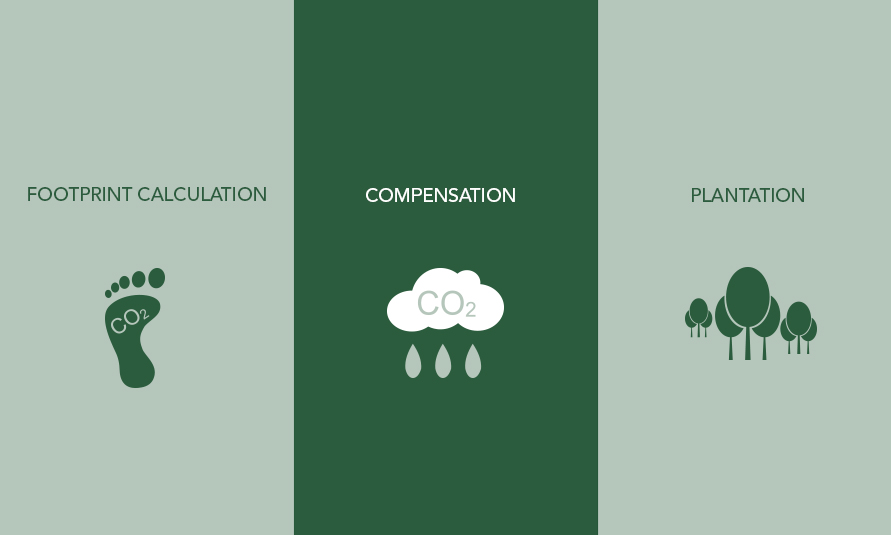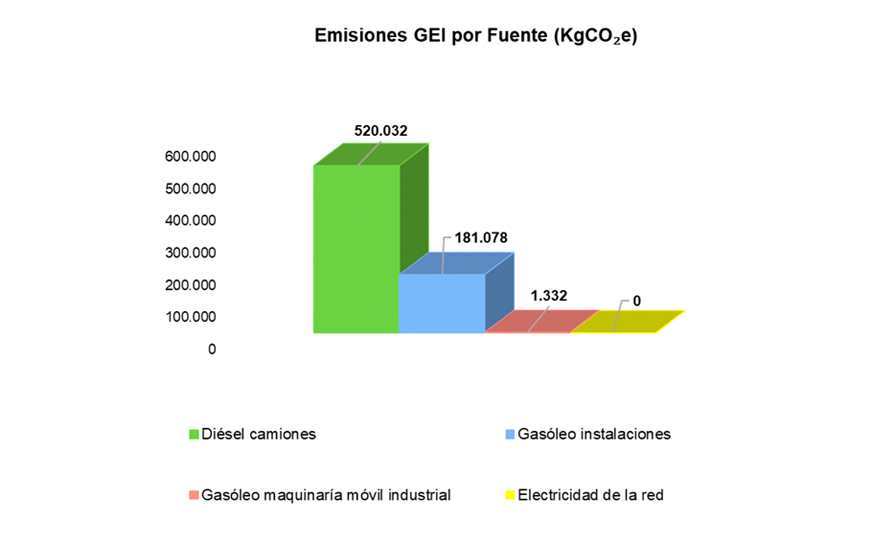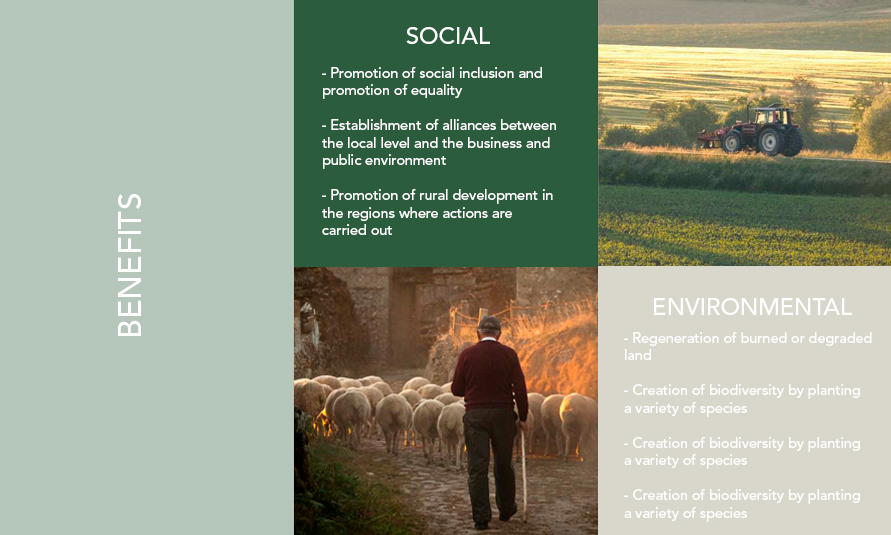What is the Carbon Footprint?
It is an environmental indicator that quantifies the amount of greenhouse gases emitted directly and/or indirectly by a company or product in the course of productive and usage activities.
The Carbon Footprint is a tool that promotes sustainable development in activities and drives environmental management policies and processes within companies. Sustainable management is a responsible way of operating and steering a company, taking into account the environment and the people who currently inhabit it and those who will do so in the future.
Calculating the Carbon Footprint
It involves measuring the greenhouse gases (GHG) emitted directly or indirectly by the organization and demonstrates its environmental impact by creating an inventory of emissions associated with different GHGs. Once the magnitude of the footprint is calculated, mitigation and/or compensation measures can be implemented. This is why delaoliva considers it essential to measure and record the Carbon Footprint.
Although scientists estimate that there are more than 42 GHGs, there are seven gases listed in the Kyoto Protocol: carbon dioxide (CO2), methane (CH4), nitrous oxide (N2O), hydrofluorocarbons (HFCs), perfluorocarbons (PFCs), sulfur hexafluoride (SF6), and nitrogen trifluoride (NF3).

We are MANUFACTURERS, and undoubtedly, some of the environmental costs of industrial production are inevitable, but there are always goals for improvement. Additionally, we have our own fleet of trucks, so our commitment must be to improve and reduce our Carbon Footprint through environmental conservation policies.
In 2022, our direct CO2 emissions under Scope 1 (diesel trucks, diesel facilities, and industrial machinery) amounted to 694 tons. Our indirect CO2 emissions under Scope 2 (grid electricity) were 0 tons of CO2 due to our commitment to certified renewable energy procurement. We also have two photovoltaic installations with production exceeding 80 MWh.
Translated into units of manufactured products, we could estimate average CO2 emissions at 4.25 tons per every 1,000 chairs (0.00425 tons per chair).
Our GHG emissions in 2022 (kg CO2e) were as follows:

Benefits of Measuring and Calculating the Carbon Footprint
- Reduce environmental impact
- Decrease the consumption of raw materials, energy, water, fuel, etc.
- Ethical and responsible management
- Implement a Greenhouse Gas Emissions Reduction Plan
- Transform the organization into a more competitive, ethical, and responsible model
- Identify the Environmental Footprint of the company
- Identify energy improvement areas within the organization
- Reduce the organization’s emissions
- Decrease waste generation
- Extend the product lifecycle
- Commitment to Corporate Social Responsibility
- Reduce operating costs: reducing the Carbon Footprint is profitable and sustainable

How Will We Reduce Our Carbon Footprint?
- Maintaining our ISO 14001 Management System and ISO 14006 ecodesign
- Knowing our starting point: GHG emissions and environmental impact to plan and set our annual reduction objectives
- Establishing an improvement plan: energy efficiency, using renewable energy, optimizing resource consumption, route optimization, using eco-friendly vehicles with fleet renewal. Maintenance and expansion of photovoltaic panels.
- Participating in GHG emissions offset projects: energy efficiency and renewable energy projects, forestry projects, etc.
- We have just initiated our participation in the CARBALLEDO II forestry project by planting 50 TREES in Pontevedra. We are offsetting our CO2 emissions by planting our first 50 trees with native species such as pines, firs, and willows through CO2 Revolution. In addition, with this plantation, delaoliva is contributing to:
- Social inclusion and the promotion of equality
- Building alliances between the local environment and the business world
- Fostering rural development
- Contributing to the fight against climate change
- Regenerating degraded lands
- Creating biodiversity through the planting of species



